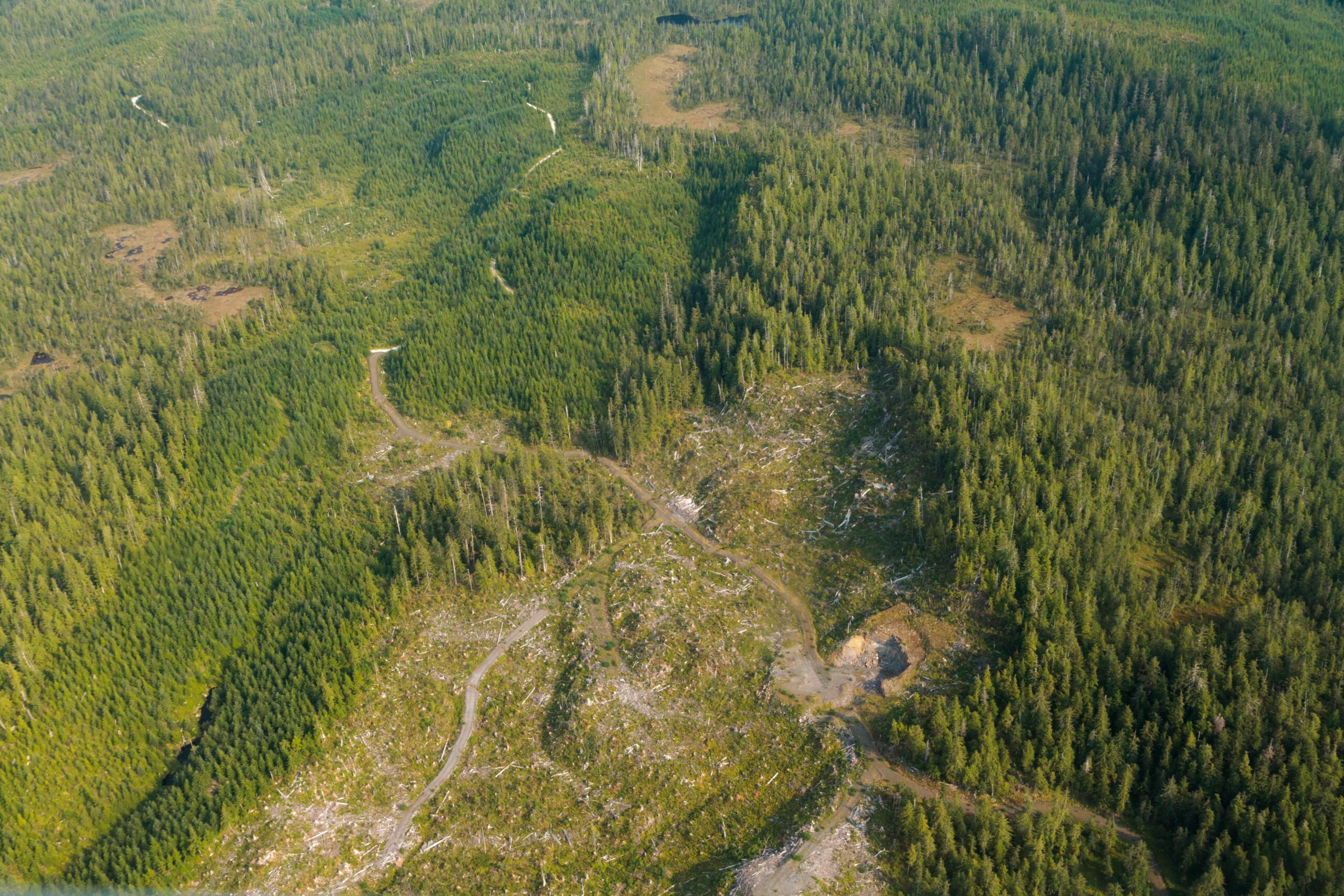Tech giants are building data centres in water-scarce regions on five continents
Amazon, Microsoft and Google are operating data centres that use vast amounts of water in some of the world’s driest areas and are building many more, an investigation by SourceMaterial and The Guardian has found.
With US President Donald Trump pledging to support them, the three technology giants are planning hundreds of data centres in the US and across the globe, with a potentially huge impact on populations already living with water scarcity.
“The question of water is going to become crucial,” said Lorena Jaume-Palasí, founder of The Ethical Tech Society. “Resilience from a resource perspective is going to be very difficult for those communities.”
Efforts by Amazon, the world’s biggest online retailer, to mitigate its water use have sparked opposition from inside the company, SourceMaterial’s investigation found, with one of its own sustainability experts warning that its plans are “not ethical”.
In response to questions from SourceMaterial and The Guardian, spokespeople for Amazon and Google defended their developments, saying they always take water scarcity into account. Microsoft declined to comment.
Data centres, vast warehouses packed with computers for remote storage and data processing, use water for cooling. SourceMaterial’s analysis identified 38 active data centres operated by the big three in parts of the world already facing water scarcity, as well as 24 more under development.
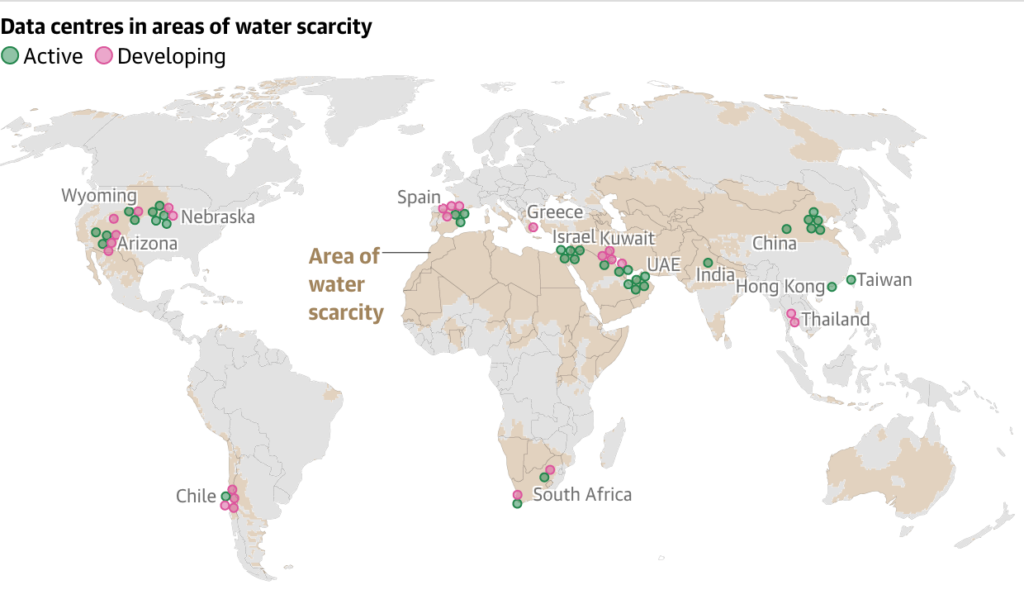
Data centre locations are often industry secrets. But by using local news reports and industry sources Baxtel and Data Center Map, SourceMaterial compiled a map of 632 centres—either active or under development—operated by Amazon, Microsoft and Google.
It shows that those companies plan to increase the number of data centres they operate worldwide by 78 per cent. With cloud computing already straining current infrastructure, advances in artificial intelligence are set to drive further demand as companies seek capacity to train models like ChatGPT.
Overall, there are 11,800 operational data centres worldwide, with 5,426 located in the United States, according to estimates from industry intelligence firm Cloudscene. Between them, the three tech giants are planning construction on every continent except Antarctica.
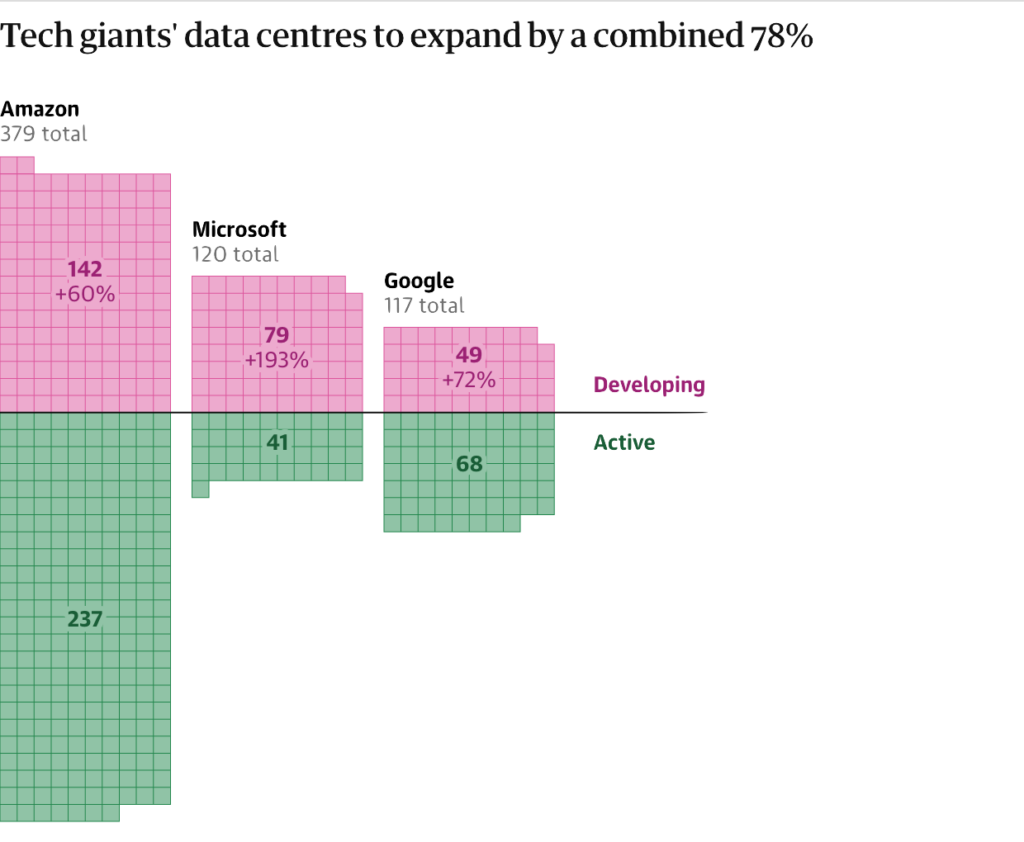
In parts of the world where water is plentiful, data centres’ high water usage is less problematic. But in 2023 Microsoft said that 42 per cent of its water came from “areas with water stress”, while Google said 15 per cent of its water consumption was in areas with “high water scarcity”. Amazon did not report a figure.
Now the companies plan to expand their activities in some of the world’s most arid regions, SourceMaterial and The Guardian’s analysis found.
“It’s no coincidence they are building in dry areas,” as centres have to be built inland, where low humidity reduces the risk of metal corrosion, while seawater also causes corrosion if used for cooling, Jaume-Palasí said.
‘Your cloud is drying my river’
Amazon’s three proposed data centres in Aragon, northern Spain—each next to an existing Amazon data centre—are licensed to use an estimated 755,720 cubic metres of water a year, enough to irrigate more than 200 hectares (500 acres) of corn, one of the region’s main crops.
In practice, the water usage will be even higher as that figure doesn’t take into account water used in generating electricity to power the new installations, said Aaron Wemhoff, an energy efficiency specialist at Villanova University in Pennsylvania.
Between them, Amazon’s planned Aragon data centres will use more electricity than the entire region currently consumes. Meanwhile, Amazon in December asked the regional government for permission to increase water consumption at its three existing data centres by 48 per cent.
Opponents have accused the company of being undemocratic by trying to rush through its application over the Christmas period. More water is needed because “climate change will lead to an increase in global temperatures and the frequency of extreme weather events, including heat waves”, Amazon wrote in its application.
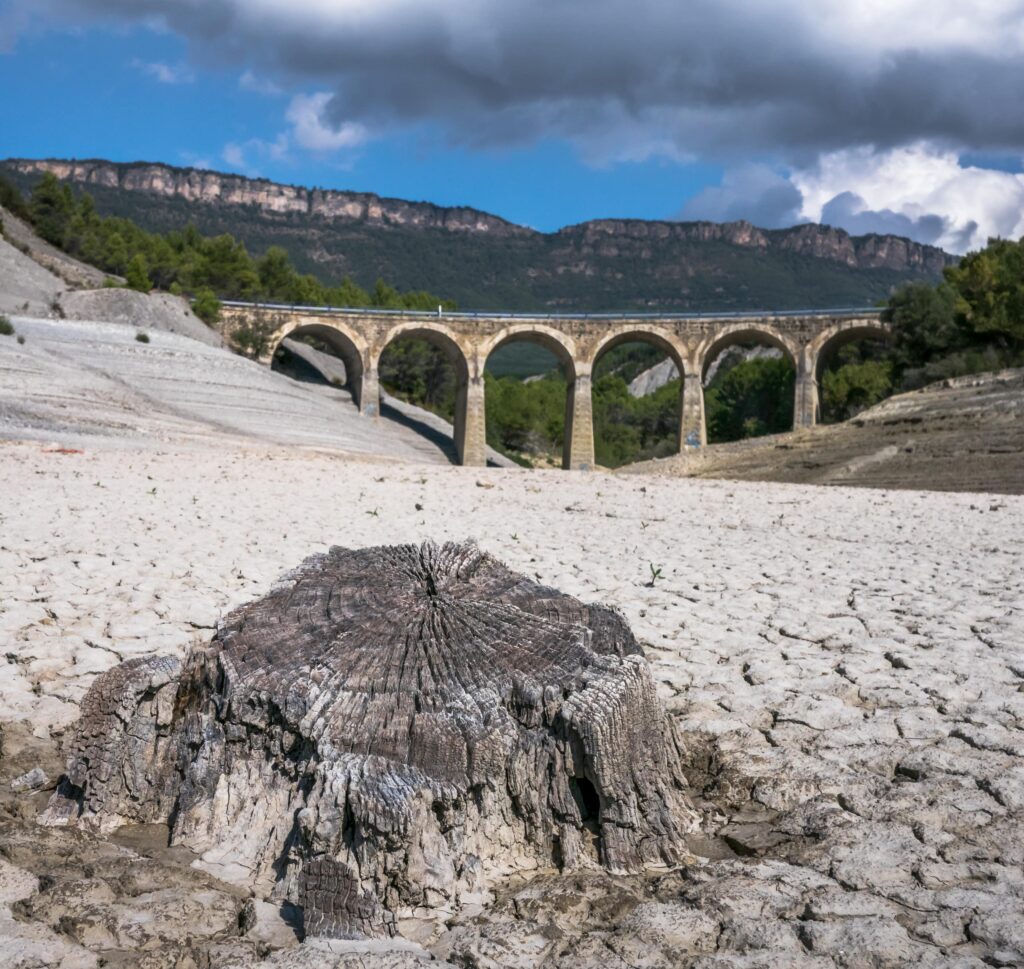
“They’re using too much water. They’re using too much energy,” said Aurora Gómez of the campaign group Tu Nube Seca Mi Río—Spanish for ‘Your cloud is drying my river’—which has called for a moratorium on new data centres in Spain due to water scarcity.
Spain has seen rising numbers of heat-related deaths in extreme weather events linked by scientists to climate change. Last month, Aragon’s government asked for EU aid to tackle its drought.
Chechu Sánchez, a farmer, said he’s worried the data centres will use up water he needs for his crops.
“These data centres use water that comes from northern Aragon, where I am,” he said. “They consume water—where do they take it from? They take it from you, of course.”
With 75 per cent of the country already at risk of desertification, the combination of climate change and data centre expansion is “bringing Spain to the verge of ecological collapse”, Jaume-Palasí said.
Asked about the decision to approve more data centres, a spokesperson for the Aragonese government said they wouldn’t compromise the region’s water resources because their impact is “imperceptible”.
Water offsetting
Amazon doesn’t provide a figure for its global water use. But it does claim that it will be “water positive” by 2030, offsetting its consumption by providing water to communities and ecosystems in areas of scarcity.
Amazon says it is currently offsetting 41 per cent of its water usage in areas it deems unsustainable. But it’s an approach that has already caused controversy inside the company.
“I raised the issue in all the right places that this is not ethical,” said Nathan Wangusi, a former water sustainability manager at Amazon. “I disagreed quite a lot with that principle.”
Microsoft and Google have also pledged to become “water positive” by 2030 through water offsetting, as well as finding ways to use water more efficiently.
“Carbon is a global problem—water is more localised”
Water offsetting can’t work in the same way as carbon offsetting, where a tonne of pollutants removed from the atmosphere can cancel out a tonne emitted elsewhere, said Wemhoff, the Villanova University specialist. Improving access to water in one area does nothing to help the community that has lost access to it far away.
“Carbon is a global problem—water is more localised,” he said.
Amazon should pursue water accessibility projects “because it’s the right thing to do,” not to offset the company’s usage and make claims about being “water positive”, Wangusi said.
In March, Amazon announced that it would use AI to help farmers in Aragon use water more efficiently.
It’s “a deliberate strategy of obfuscation” that distracts from the company’s request to raise water consumption, said Gómez, the campaigner.
Amazon said its approach shouldn’t be described as offsetting because the projects are in communities where the company operates.
“We know that water is a precious resource, and we’re committed to doing our part to help solve this challenge,” said Harry Staight, an Amazon spokesperson. “It’s important to remember many of our facilities do not require the ongoing use of water to cool operations.”
‘Extreme drought’
Amazon’s Web Services cloud division makes it the biggest operator of data centres, but Google and Microsoft are catching up.
In the US, the country with the most data centres, Google is the most likely to build in dry areas, SourceMaterial’s data shows. It has seven active data centres in parts of the US facing water scarcity and is building six more.
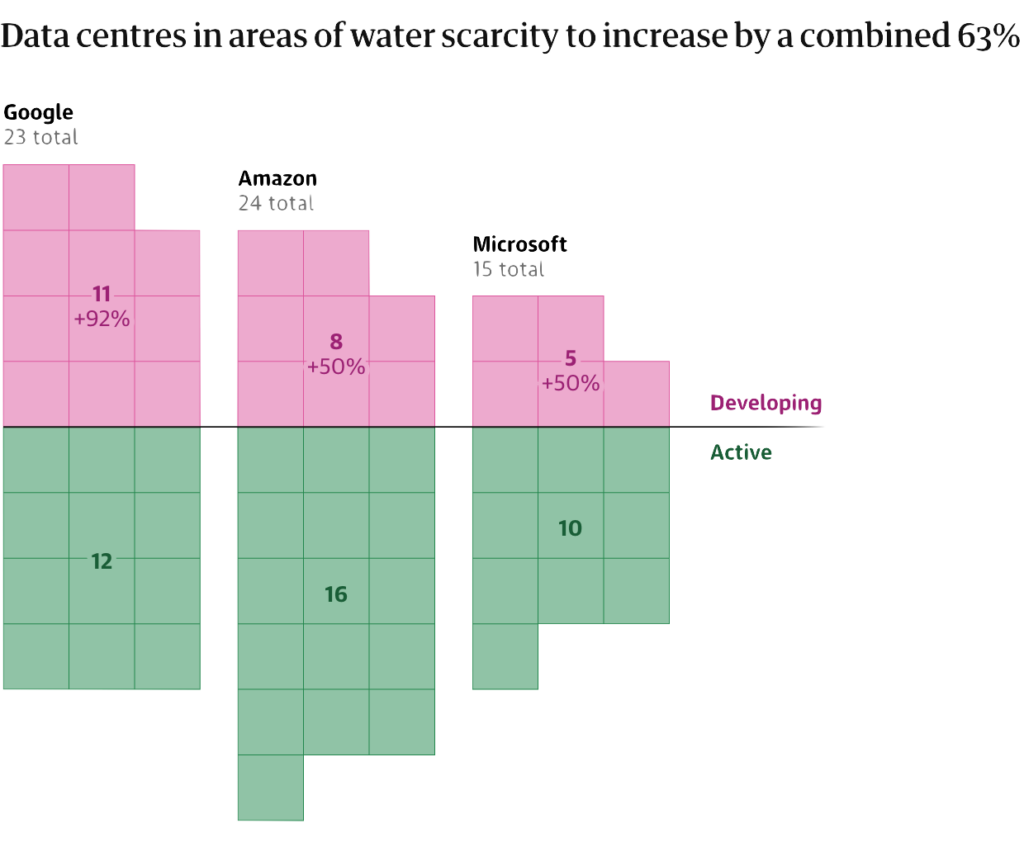
“We have to be very, very protective around the growth of large water users,” said Jenn Duff, a council member in Mesa, Arizona, a fast-growing data centre hub. In January, Meta, the owner of Facebook, WhatsApp and Instagram, opened a $1 billion data centre in the city, and Google is developing another two.
The surrounding Maricopa County, where Microsoft also has two active data centres, is facing “extreme drought”, according to the National Oceanic and Atmospheric Association. In June 2023, Arizona state officials revoked construction permits for some new homes there due to a lack of groundwater.
Drought has not halted Google’s plans for a second Mesa data centre, while its first centre has a permit to use 5.5 million cubic metres of water a year—about the same quantity used by 23,000 ordinary Arizonans.
“Is the increase in tax revenue and the relatively paltry number of jobs worth the water?” said Kathryn Sorensen, an Arizona State University professor and a former director of Mesa’s water department. “It is incumbent on city councils to think very carefully and examine the trade-offs.”
Google said it won’t use the full amount of water in its Mesa permit as it plans to use an air cooling system.
“Cooling systems are a hyperlocal decision—informed by our data-driven strategy called ‘climate-conscious cooling’ that balances the availability of carbon-free energy and responsibly-sourced water to minimise climate impact both today and in the future,” said Google spokesman Chris Mussett.
Stargate
In January at the White House, Trump announced ‘Project Stargate’, which he called “the largest AI infrastructure project in history”.
Starting in Texas, the $500 billion initiative—a joint venture between OpenAI, the American software company Oracle, Japan-based SoftBank and Emirati investment firm MGX—will finance data centres across the US.
The day before the Stargate announcement, Chinese company DeepSeek launched its own AI model, claiming it had used far less computing power—and therefore less water—than its Western rivals.
More recently, Bloomberg has reported that Microsoft is pulling back on some of its plans for new data centres around the world. Microsoft has also published plans for a “zero water” data centre and Google has said it will incorporate air cooling to reduce water use—though it isn’t yet clear how its systems will work.
“I’ll believe it when I see it,” said Jaume-Palasí. “Most data centres right now are going from air cooling to water cooling because liquid is more efficient when you try to cool down high-density racks, which are the ones that are mostly being used for AI.”
And while the Trump administration has pledged to fast-track new energy projects to power more data centres, officials have so far said nothing about the water they could consume.
“Neither people nor data can live without water,” said Gómez. “But human life is essential and data isn’t.”
Additional reporting by Eleanor Gunn
Headline picture: Dying cactus in Lost Dutchman State, Maricopa County, Arizona (Prisma by Dukas Presseagentur GmbH / Alamy Stock Photo)



